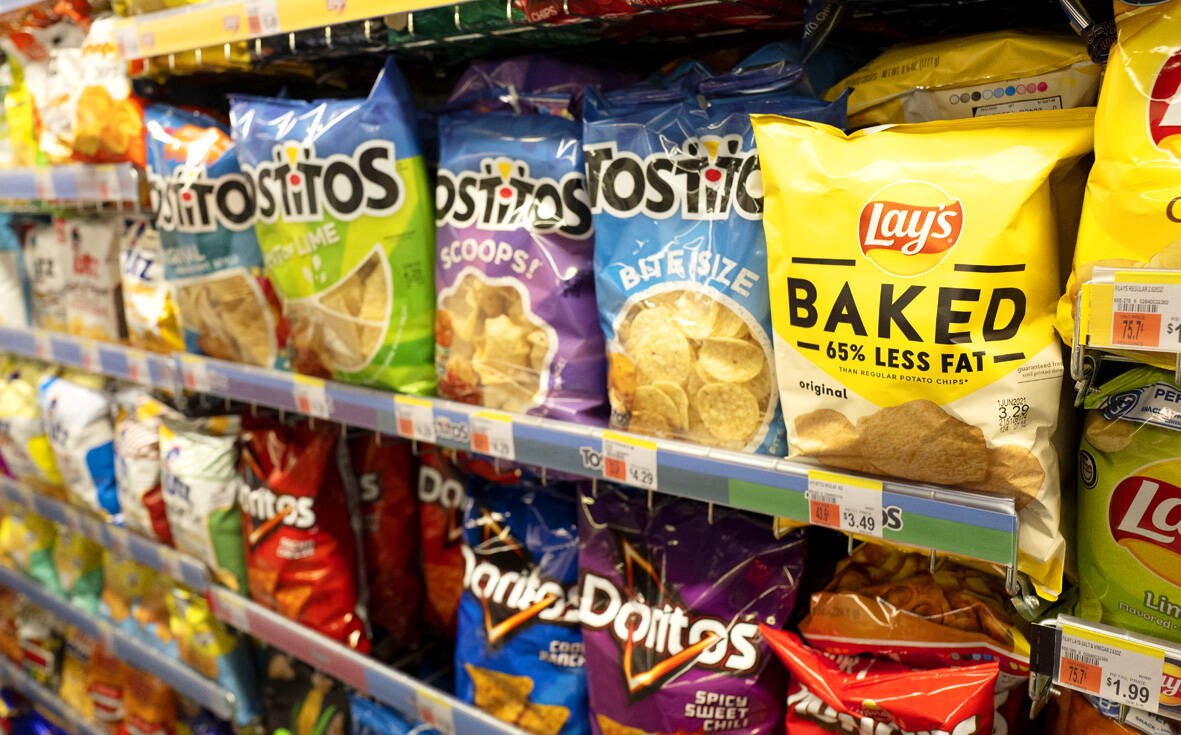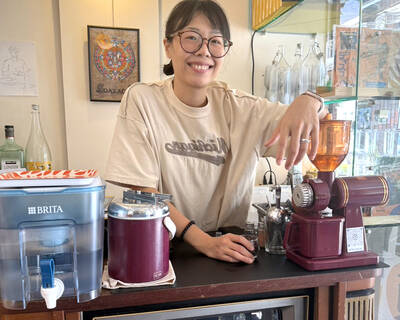“Far from being a rock or island … it turns out that the best metaphor to describe the human body is ‘sponge.’ We’re permeable,” write Rick Smith and Bruce Lourie in their book Slow Death By Rubber Duck: The Secret Danger of Everyday Things. While the permeability of our cells is key to being alive, it also means we absorb more potentially harmful substances than we realize.
Studies have found a number of chemical residues in human breast milk, urine and water systems. Many of them are endocrine disruptors, which can interfere with the body’s natural hormones.
“They can mimic, block or otherwise disrupt normal hormone function, leading to adverse health effects,” says Shanna Swan, professor of environmental medicine and reproductive health at the Icahn School of Medicine at Mount Sinai, New York.

Photo: AP
We (often unknowingly) ingest, inhale or otherwise absorb them, and while toxicity depends on dosage, the reality is that a lot of us are exposed to them daily.
So what to do about it? There are apps that will give you information about the ingredients in products, such as Yuka, Think Dirty and EWG’s Healthy Living, but there are some key “nasties” worth knowing about. Because science is always evolving, navigating these issues can be tricky — even for the experts. That’s why many specialists recommend looking at your overall lifestyle and habits, rather than fixating on individual substances in isolation. The list that follows is far from exhaustive, but it highlights 11 ingredients that science suggests may pose risks to our health.
COSMETICS — PHTHALATES

Photo: AP
This group of chemicals is found in fragrances, plastic (including children’s toys) and other cosmetics and personal care products — such as hairspray and nail polish. Some phthalates are deemed endocrine disruptors “linked to preterm birth, fertility issues, early puberty and some cancers,” says Alexa Friedman, a senior scientist at non-profit health organization Environmental Working Group. Swan adds that they can lower testosterone levels and increase our oestrogenic response, in turn affecting sperm, egg health and fertility, and increasing the risk of miscarriage and birth defects. While some are considered safer than others at low doses, many are still linked with negative health concerns and/or are currently under-researched.
To reduce exposure, avoid vague “fragrance” labels and ingredients ending in “phthalate,” such as dibutyl phthalate or diethyl phthalate. Brands such as Ilia, Westman Atelier, Refy, Merit Beauty, Weleda, Olaplex, Charlotte Tilbury and Paula’s Choice avoid using them, but if in doubt check the EWG’s Skin Deep cosmetics database to learn exactly what’s in every formula you use.
PARABENS

Photo: Reuters
Used as preservatives in makeup, skincare, haircare and some processed food, parabens extend shelf life and prevent microbial growth. Long-chain parabens, such as propylparaben, butylparaben and isobutylparaben, are endocrine disruptors that mimic oestrogen and “may contribute to hormonal imbalances, reproductive harm, asthma, allergies, obesity and possibly hormone-sensitive cancers later in life,” says Dr Federica Amati, head nutritionist at Zoe, the personalised nutrition app.
Though some argue low doses are safe, many brands now offer paraben-free options. Look to Drunk Elephant, The Ordinary, Paula’s Choice, Tata Harper and Living Proof, as well as most CeraVe and La Roche-Posay formulas too.
FRANGRANCE
They may smell good, but many fragrance chemicals are phthalates or volatile compounds that release gas into the air. Often not fully disclosed on labels, they can trigger allergies and disrupt hormones, says Amati. One example, Lilial (butylphenyl methylpropional) was widely used in cosmetics until it was banned in the UK and EU in 2022.
“Beware of ingredient lists that use the words ‘fragrance’ or ‘parfum’ as they can hide phthalates and other chemicals,” advises Amati. Opt for fragrance-free skincare (Avene and Dermatica do great formulas, while Bioderma’s Sensibio and La Roche-Posay’s Toleriane lines are also good options) and haircare (such as Philip Kingsley’s No Scent No Color shampoo) and again, always read the label.
FOOD — ARTIFICIAL SWEETENERS
“Artificial sweeteners, like sucralose and saccharin, can disrupt gut microbiota and impair glucose metabolism, potentially leading to metabolic disorders like diabetes,” says Amati.
These low-calorie sugar substitutes are often found in products that are labeled “diet” or “sugar-free.” Studies also link intake with increased risk of cardiovascular disease and unnecessary appetite stimulation. When buying supermarket products, be wary of low-sugar marketing claims and prioritize eating whole foods (raspberries are a great high-fiber, low-sugar snack) over processed foods and diet drinks. Swap fizzy beverages (which are often full of artificial sweeteners) for Dalston’s Soda or Momo’s raw and unfiltered kombucha, which is also great for gut health.
HIGH-FRUCTOSE CORN SYRUP
High-fructose corn syrup (HFCS) is a sweetener commonly found in processed foods, fizzy drinks, sweets, sauces, breakfast cereals, baked goods and even certain yogurts and flavored dairy products in the UK, and especially in the US. It is inflammatory, “disrupts the metabolism and contributes to insulin resistance, blood sugar instability, obesity and type 2 diabetes,” says Rhian Stephenson, nutritionist, naturopath and founder of Artah, which sells supplements and nutrition programs.
“It also offers little nutritional value and negatively affects energy levels, hormones and metabolic health.”
In the UK, HFCS may appear on labels as glucose-fructose syrup or isoglucose, but elsewhere it goes by other names, such as maize syrup. Stephenson advises reading full ingredient lists, “not just the front label, because marketing claims — such as ‘natural’ or ‘low fat’ — can be misleading,” she says. “In fact, they are usually a warning sign.”
For some extra assistance, Amati recommends the Zoe processed food risk scale, a science-backed tool that offers guidance on what’s in processed foods. Ultimately, cooking whole foods at home is the best way to avoid HFCS and similar additives.
EMULSIFIERS
Widely used to improve the texture and shelf life of packaged foods, emulsifiers have “been shown (in animal studies) to cause gut inflammation and glucose intolerance, and many worsen intestinal diseases like ulcerative colitis,” says Amati. It is found in products such as ice-cream, mayonnaise, chocolate, packaged bread and oat milk (common examples include polysorbate 80, carboxymethyl cellulose or CMC and carrageenan).
Emulsifier-free supermarket buys include Jason’s Sourdough (which also doesn’t contain sweeteners), Plenish’s Oat Milk, Yeo Valley’s Organic Vanilla Ice-Cream and Kallo’s Belgian Milk Chocolate Organic Rice Cake Thins. While currently deemed safe in small amounts, emulsifiers are worth watching as research in humans evolves.
NITRITES
Whether it’s bacon, salami or hotdogs, most processed meats are preserved using nitrites. These can form carcinogenic nitrosamines in the body, and have been scientifically linked to an increased risk of colorectal cancer, rates of which are rising globally. The WHO advises limiting intake, and to be particularly wary of heating them above 130C, which is when nitrosamines can form — and have been linked to stomach and bowel cancer.
ARTIFICIAL FOOD DYES
Artificial food dyes are added to food and drink to create specific colors. While the most concerning culprits — red 3 (E127) and red 40 (E129) — are no longer widely used in the UK, some are, including ponceau 4R (E124), sunset yellow (E110), quinoline yellow (E104), carmoisine (E122) and tartrazine (E102), but hold Food Standards Agency warnings. They are still considered safe overall, but are linked to “neuroinflammation [potentially leading to diseases such as Alzheimer’s and Parkinson’s], hormone disruption and behavioral issues such as hyperactivity and attention difficulties, especially in sensitive individuals like children,” says Stephenson. “There are concerns about their impact on developing brains and nervous systems.”
You’ll find them in some fizzy drinks, sweets, canned fruit, jellies, mushy peas, ready meals and products imported from the US, including various sweets. Most food companies in the UK now avoid them. However, if they are used, it is a legal requirement that the products carry a warning (“may have an adverse effect on activity and attention in children”), so check the label.
TRANS FATS
Trans fats — especially those that are artificially made — raise LDL (bad) and lower HDL (good) cholesterols, and are linked to chronic inflammation and heart disease. They can also “disrupt hormone balance, impair insulin sensitivity, and affect everything from mood and metabolism to fertility and menstrual health,” says Stephenson.
Found in ultraprocessed foods, such as frozen pizza, chips, doughnuts, cakes and margarine, they also contribute to the unhealthy visceral fat that builds up around key organs such as the liver and intestines, which raises inflammation and increases the risk of a number of diseases.
If “partially hydrogenated oil” is listed on the label, take it as an immediate red flag, while interesterified fats, hydrogenated vegetable oil and shortening (a type of fat used to create crumbly pastry) are other warning signs, says Stephenson.
KITCHEN — PFAS
Own a Teflon pan? Then you will have encountered Pfas (per- and polyfluoroalkyl substances), a family of “forever chemicals” that are in some non-stick coatings. They are also used for water- or smudge-resistance in cosmetics, textiles and outdoor clothing.
“Pfas degrade incredibly slowly,” says Jonatan Kleimark, head of corporate sustainability at ChemSec.
This allows them to build up in the body and the environment, which is worrying as they are carcinogenic and can disrupt our hormones, reduce immune function and cause reproductive issues.
To avoid them, swap non-stick pans for carbon, ceramic or stainless steel: brands such as Our Place and Le Creuset offer highly Instagrammed, Pfas-free pots and pans. Many brands now make it clear that their products are Pfas-free, so keep an eye out. In makeup and skincare, beware of ingredients that feature “fluor” somewhere in their name (see: perfluorooctanesulfonic acid), especially if they are in long-wear or waterproof products as these are often Pfas, says Kleimark.
BPA
An industrial chemical used to make rigid plastics, bisphenol A (or BPA) is a “well-studied endocrine disruptor associated with hormone-sensitive diseases (such as endometriosis, polycystic ovary syndrome, ovarian, breast, prostate and thyroid cancers and postpartum depression) and metabolic disorders,” says Amati. It also affects cognitive function and raises risk of obesity. Like Pfas, it accumulates in the body over time, increasing long-term disease risk. Research in 2020 found BPA in the urine of 92 percent of adults in 11 European countries.
Though Tupperware is BPA-free, the substance is still found in many plastic containers, refillable drinks bottles and tin can linings. To avoid it, switch to glass containers (VonShef and Pyrex are good options), buy BPA-free water bottles, such as Ocean Bottle, and look for a “BPA-free” label on cans. If the can’s recycling code is 3 or 7 (see the green triangle), chances are it contains a BPA lining.

Cheng Ching-hsiang (鄭青祥) turned a small triangle of concrete jammed between two old shops into a cool little bar called 9dimension. In front of the shop, a steampunk-like structure was welded by himself to serve as a booth where he prepares cocktails. “Yancheng used to be just old people,” he says, “but now young people are coming and creating the New Yancheng.” Around the corner, Yu Hsiu-jao (饒毓琇), opened Tiny Cafe. True to its name, it is the size of a cupboard and serves cold-brewed coffee. “Small shops are so special and have personality,” she says, “people come to Yancheng to find such treasures.” She

Late last month Philippines Foreign Affairs Secretary Theresa Lazaro told the Philippine Senate that the nation has sufficient funds to evacuate the nearly 170,000 Filipino residents in Taiwan, 84 percent of whom are migrant workers, in the event of war. Agencies have been exploring evacuation scenarios since early this year, she said. She also observed that since the Philippines has only limited ships, the government is consulting security agencies for alternatives. Filipinos are a distant third in overall migrant worker population. Indonesia has over 248,000 workers, followed by roughly 240,000 Vietnamese. It should be noted that there are another 170,000

Hannah Liao (廖宸萱) recalls the harassment she experienced on dating apps, an experience that left her frightened and disgusted. “I’ve tried some voice-based dating apps,” the 30-year-old says. “Right away, some guys would say things like, ‘Wanna talk dirty?’ or ‘Wanna suck my d**k?’” she says. Liao’s story is not unique. Ministry of Health and Welfare statistics show a more than 50 percent rise in sexual assault cases related to online encounters over the past five years. In 2023 alone, women comprised 7,698 of the 9,413 reported victims. Faced with a dating landscape that can feel more predatory than promising, many in

“This is one of those rare bits of TikTok fitness advice with a lot of truth behind it,” says Bethan Crouse, performance nutritionist at Loughborough University. “Sometimes it’s taken a bit too literally, though! You see people chugging protein drinks as they’re scanning out of their gym.” Crouse recommends the athletes she works with consume 20-30g of protein within 30-60 minutes of finishing a resistance training session. “The act of exercising our muscles increases the breakdown of muscle proteins,” she says. “In order to restore, or hopefully improve them — and get gains such as increased muscle mass or strength —